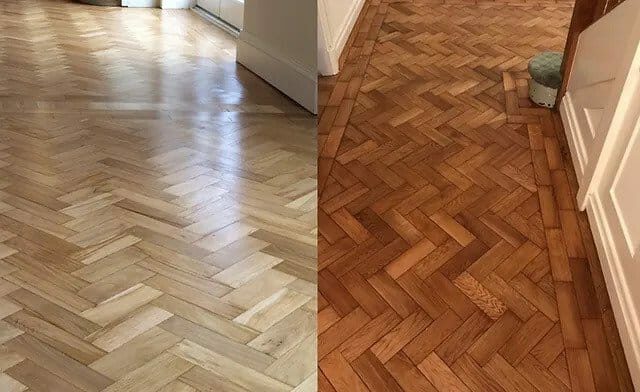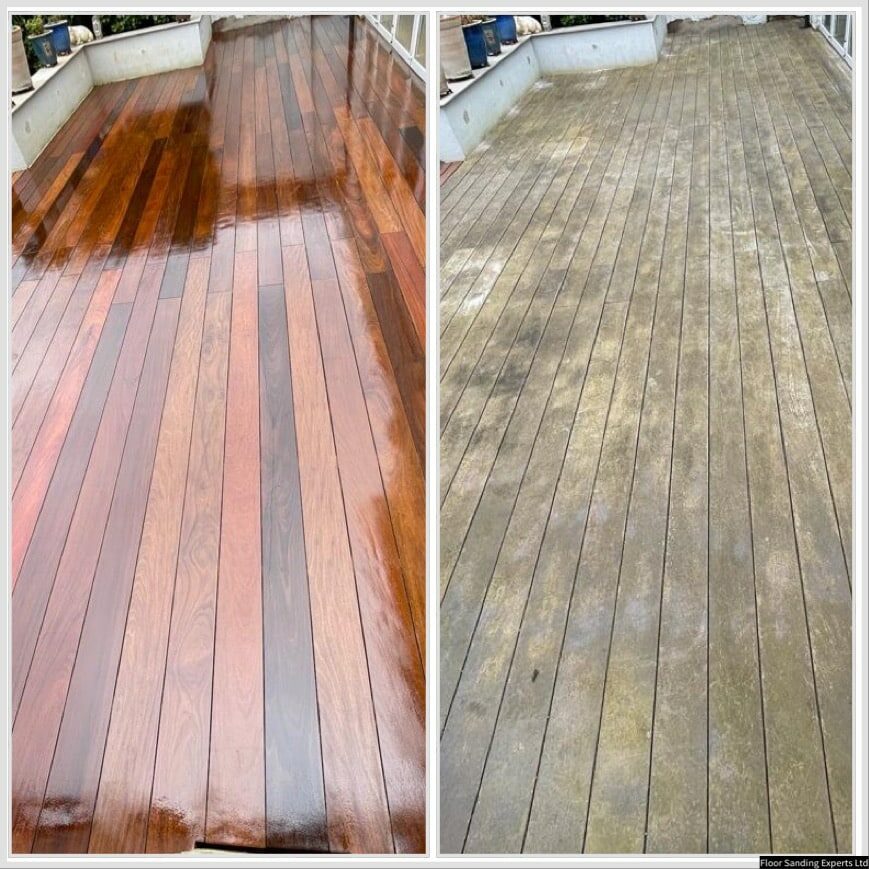London:
Nationwide:
Importance of Wood Floor Sanding
VIEW PRICINGImportance of Wood Floor Sanding
Wooden floors exude a timeless charm that can beautify any space, be it residential or commercial. However, to maintain their allure and functionality, these floors require regular maintenance, and wood floor sanding plays an integral part in this. Let’s explore the importance of wood floor sanding, uncovering why it’s critical for your floors’ longevity and aesthetics.

Why Wood Floor Sanding?
Enhances Appearance
One of the primary benefits of sanding wooden floors is that it can significantly enhance the overall appearance of your floors. Over time, wooden floors can accumulate scratches, stains, and signs of wear and tear that can detract from their beauty. Sanding removes the worn-out top layer of the wood, revealing a fresh layer beneath. This process restores the floor’s original lustre, making it look new again.

Increases Durability
Aside from aesthetic benefits, sanding wooden floors also increases their durability. By removing the top layer of the wood, which may have been exposed to damaging factors like moisture and sunlight, you’re essentially giving your floor a new lease on life. The new layer will be more resistant to daily wear and tear, ensuring your floors stay beautiful and functional for longer.

Facilitates Refinishing
If you’re considering a change in the colour or finish of your wooden floor, sanding is a crucial first step. It prepares the wood for the application of a new stain or finish, ensuring it adheres properly and lasts longer.
The Historical Role of Wood Floor Sanding
Wood floor sanding is not a modern practise. Its roots trace back to the Middle Ages, when craftsmen would scrape wooden floors to smooth out imperfections. The evolution of this technique through the centuries underscores its importance in maintaining wooden floors. Today, we use advanced tools and machines, but the essential role of sanding remains unchanged: preserving the longevity and beauty of wooden floors.
The Sanding Process: A Brief Overview
Sanding wooden floors is a process that requires careful planning and execution. Here’s a simple breakdown of the process:
- Preparation: Empty the room and ensure the floor is free from nails, staples, or any debris.
- Sanding: Start with the edges using an orbital sander, and then move to the main floor area with a drum sander. It’s recommended to start with coarse-grit sandpaper and gradually move to finer grits.
- Cleaning: After sanding, thoroughly clean the floor to remove dust and debris. A vacuum cleaner works best for this.
- Finishing: Apply your choice of finish or sealant, ensuring even application for a smooth and attractive final result.
How Often Should You Sand Your Floors?
The frequency of sanding your wooden floors depends on several factors, such as the type of wood, the floor’s age, and its wear level. However, as a general rule, wooden floors should be sanded and refinished every 7–10 years. High-traffic areas may need more frequent sanding.
Conclusion: The Indisputable Importance of Wood Floor Sanding
The importance of wood floor sanding cannot be overstated. Not only does it rejuvenate the aesthetic appeal of your floors, but it also strengthens their durability, preparing them for many more years of service. Furthermore, it enables you to alter the floor’s appearance through refinishing, allowing for more flexibility in home design.
Despite seeming like a challenging task, with a little planning, patience, and effort, anyone can undertake wood floor sanding. And the reward? A stunning wooden floor that not only impresses with its looks but also withstands the test of time In a nutshell, wood floor sanding is an essential practise for maintaining the elegance, durability, and utility of your wooden floors.
Request a fixed price quote for your wood floor restoration now
Simply enter your postcode below to get started.
Services
Wood Floor Sanding Wood Floor Restoration Wood Floor Scratch Repair Squeaky Wood Floor Repair Parquet Floor Sanding Parquet Floor Restoration Commercial Floor Sanding Church Floor Sanding Community Centre Floor Sanding School Floor Sanding Gap Filling Gap Filling with ResinCopyright © Mr Sander®
Privacy & Cookies Terms & Conditions Complaints Procedure Cancellation Rights Sitemap


